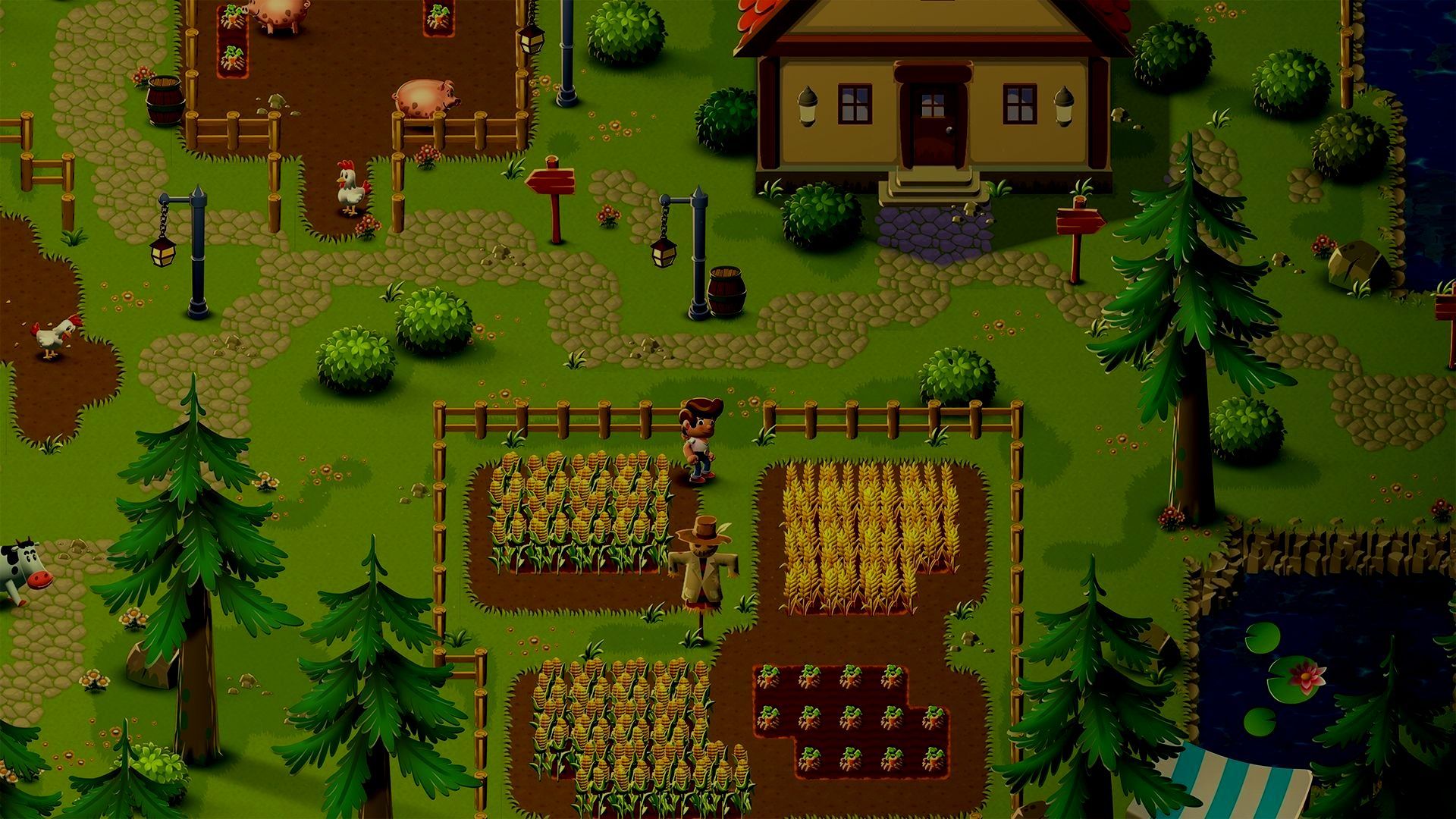
Unity 2D suite for game creators
Build incredible 2D games
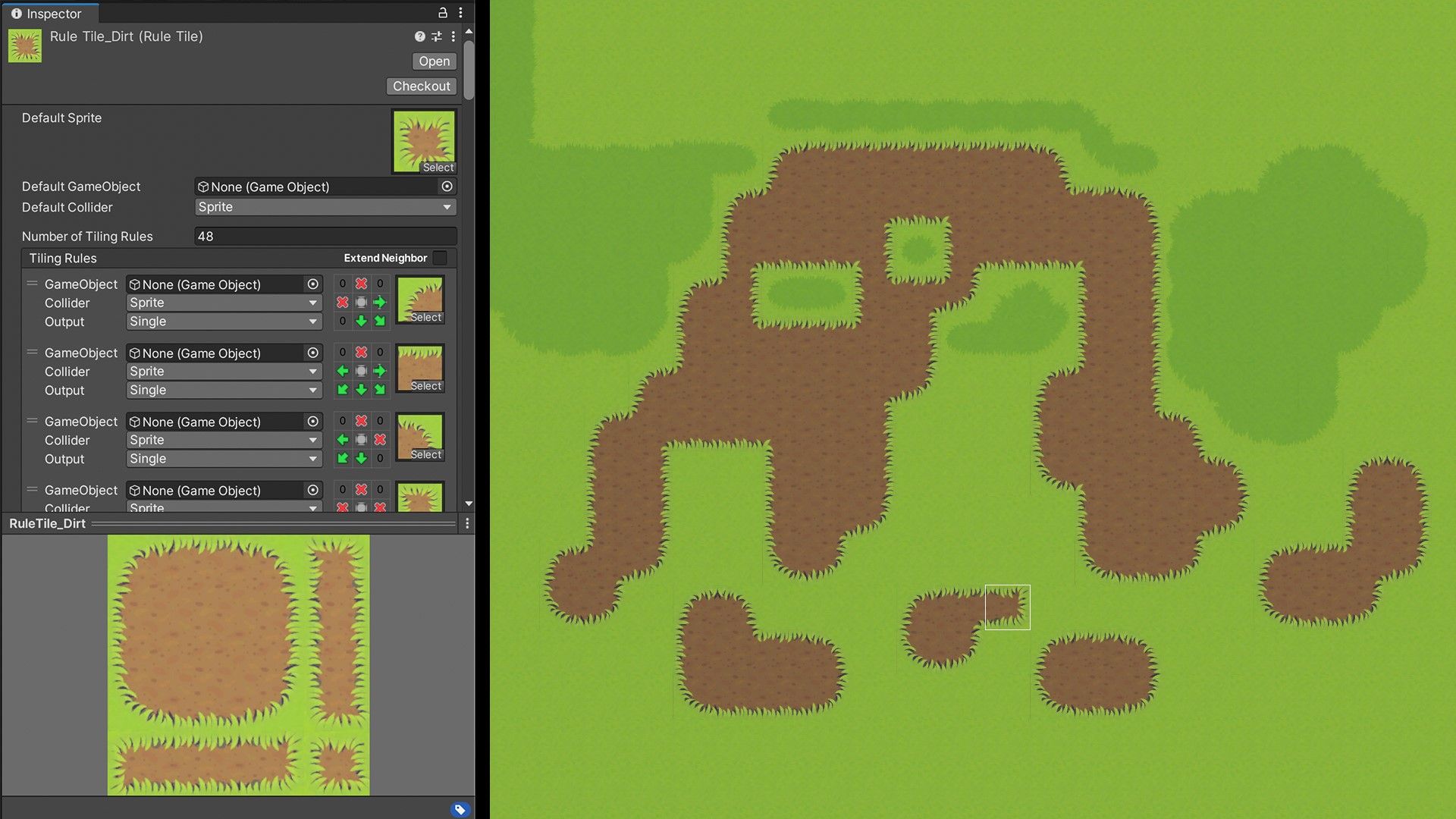
Immersive 2D worlds
Create diverse organic or grid-based worlds with the Tilemap and SpriteShape features. Empower level designers with artist-friendly workflows and procedural tiles and brushes.
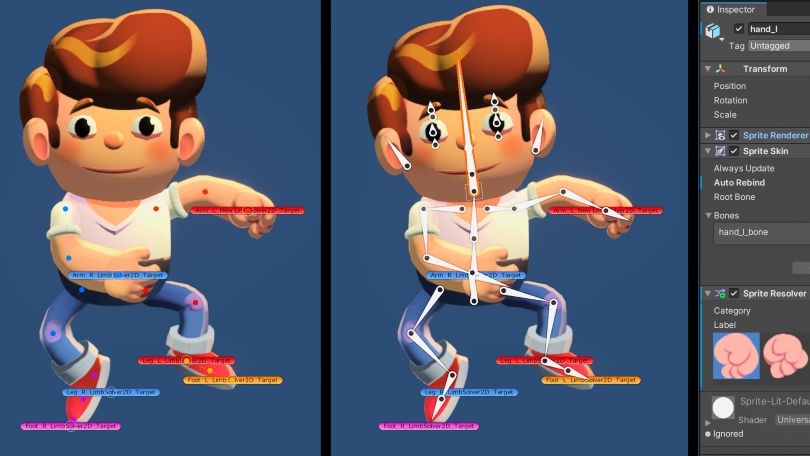
Lifelike and engaging 2D characters
Bring your game to life with engaging flipbook, cutout, and skeletal 2D characters. Enhance character workflows with multilayered source art, and animate with FK, IK, and blending.
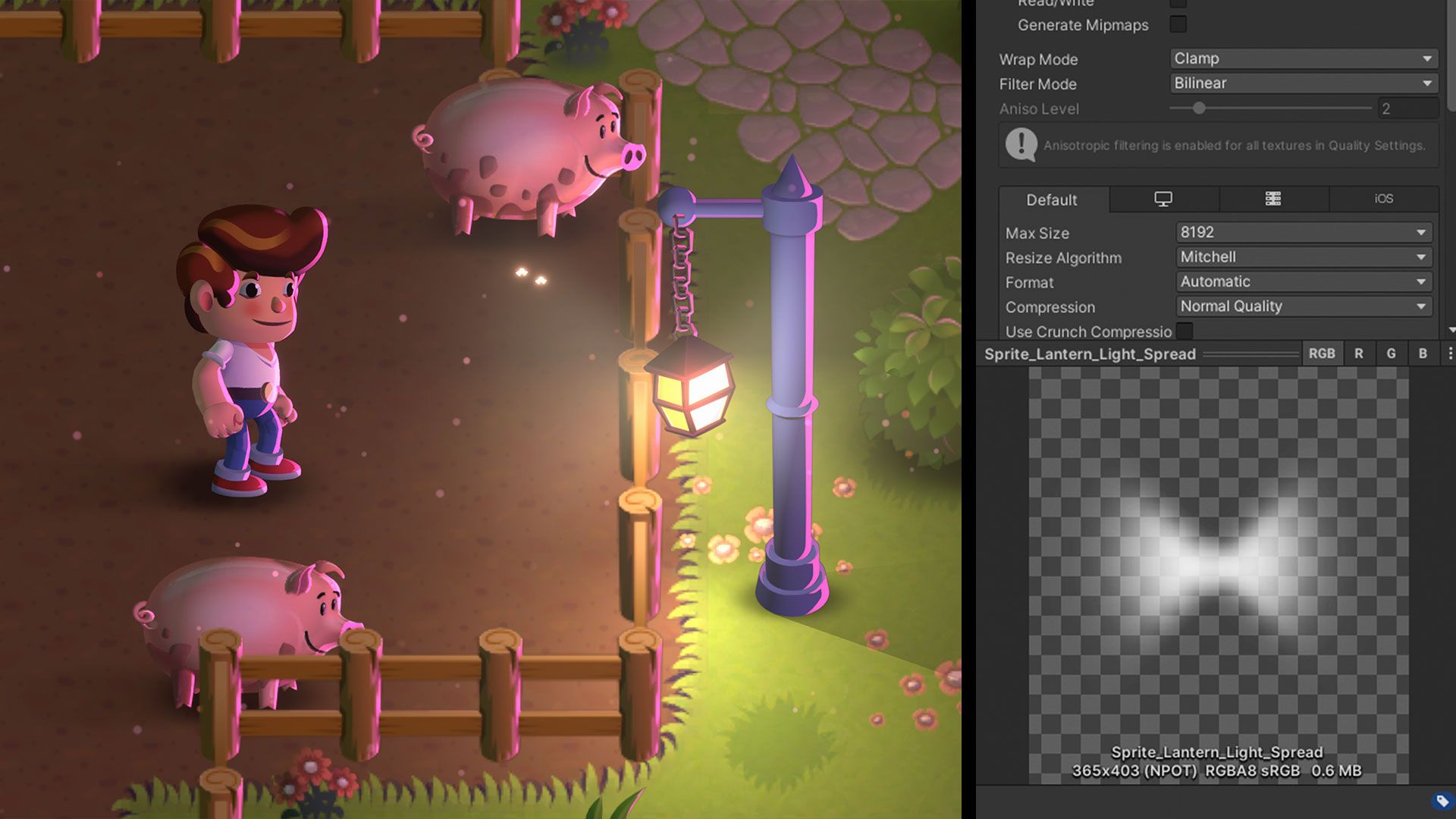
Stunning 2D graphics
Render amazing 2D visuals with 2D Lights, shadows, and post-processing, with support for deep customization with Shader Graph and the Universal Render Pipeline (URP).
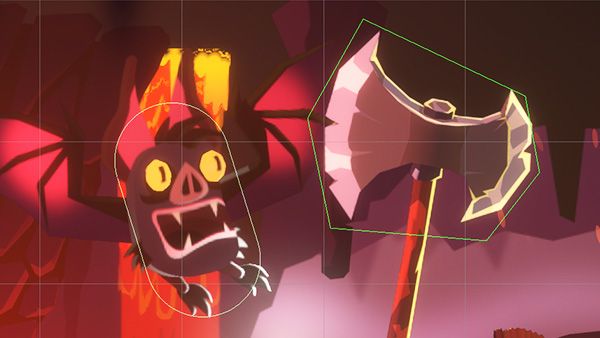
Advanced 2D physics
Simulate realistic 2D physics with highly optimized colliders, joints, and effectors, plus efficient simulation controls.
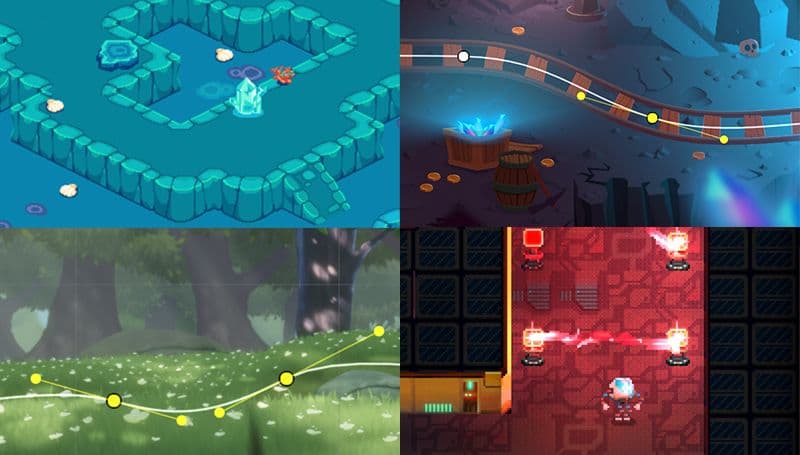
Build immersive 2D worlds
Create immersive 2D worlds directly in the Editor using artist-friendly and powerful features. Make rich, free-form organic worlds driven by splines with 2D SpriteShape. Build large grid-based worlds with 2D Tilemap using square, hexagonal, or isometric tiles.
Empower your artists with procedurally driven SpriteShapes, Tilemap tiles, and brushes. Use code to generate complete worlds or boost productivity by automating various aspects of painting and layout. Both 2D SpriteShape and the 2D Tilemap Editor offer complete APIs, documentation, and compatibility with many other Unity systems.
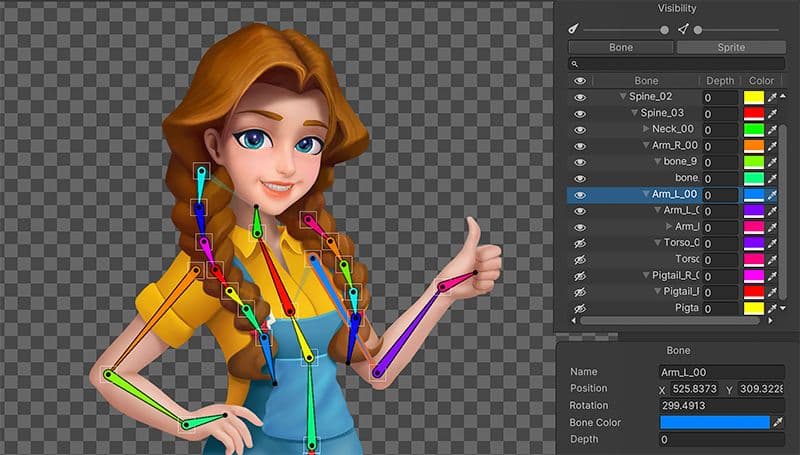
Create lifelike 2D characters
Build 2D characters right in Unity using the 2D suite’s complete character creation and animation features.
Work with multilayered source art using the 2D PSD Importer. This imports, separates, and slices up the various parts of a character, then automatically reconstructs it as a Prefab ready for further rigging and animation.
Create flipbook characters with a powerful asset pipeline, and start animating almost immediately using automatically generated keyframes.
Create deformable characters using skin and bones. You can perform partial or full character skin swaps efficiently at runtime, and 2D Inverse Kinematics lets you animate 2D characters in the Editor.
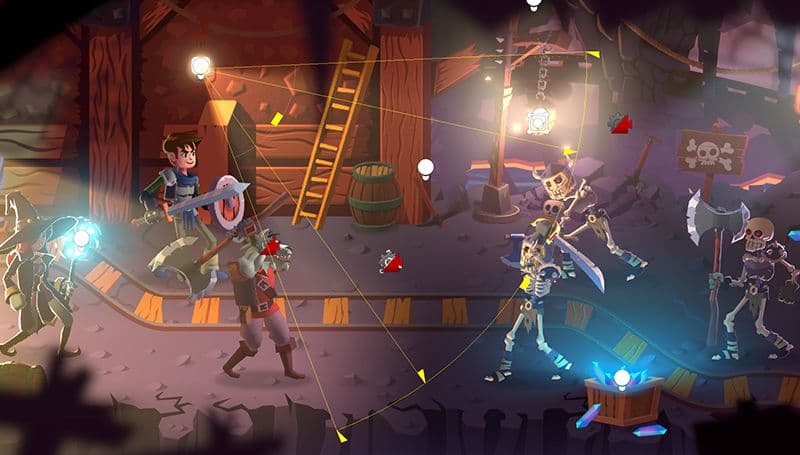
Render stunning 2D graphics
Render atmospheric visuals that bring a scene to life with 2D Lights. Play with the contrast of lights’ colors, intensity, and placement to build a mood, and control interaction with sprites using native Sorting Layers.
Create depth in graphics with highly expressive 2D Shadow features that add depth and texture to a scene.
Push the limits of 2D graphics with custom shaders in Shader Graph that incorporate your very own rendering algorithm, and create dynamic scene effects with VFX Graph. For a dash of nostalgia, render everything in Pixel Perfect, which is supported natively in the Unity Editor.
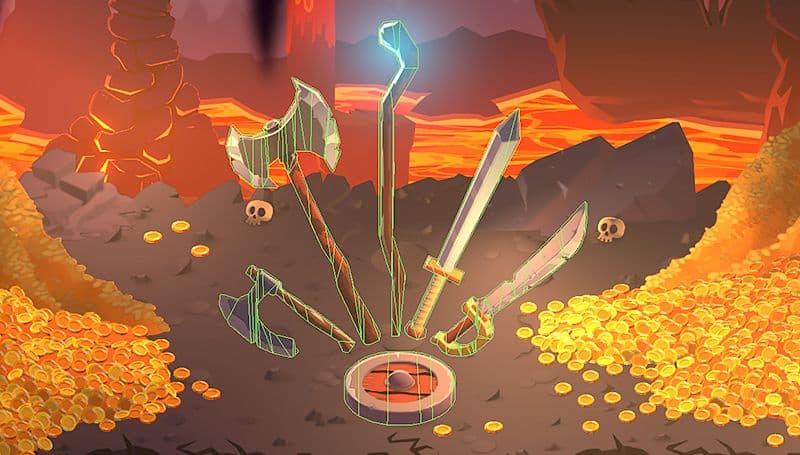
Optimized 2D physics engine
Unity comes with dedicated and optimized 2D physics, with many more features and optimizations to power your game.
2D Colliders enable accurate detection of your sprites’ shapes, from primitive to custom shapes. If they also include a Rigidbody 2D, the objects will react to gravity and behave as solid objects.
Objects anchored to another object also can benefit from physics with 2D Joints, adding realism to a sliding platform, chain, spring, or car.
Do you want to simulate buoyancy or magnets? 2D Effectors can add non-contact physics effects.
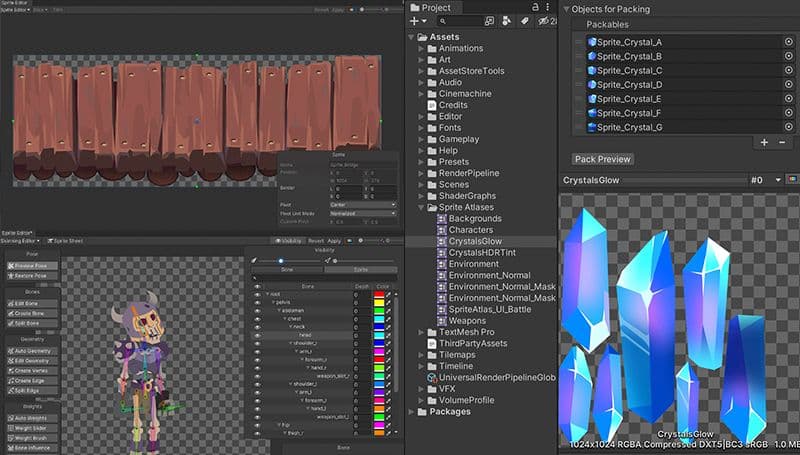
Foundational sprite and optimization tools
Set up and optimize art assets for your 2D projects. Slice, tile, adjust the pivot, redefine shapes, or add normal and mask texture sprites, all within the Sprite Editor.
Optimize your 2D game with Sprite Atlas, which enables you to pack your sprites into one texture to save draw calls and resize based on your target platform.
To further optimize and debug your game, you can use Unity profiling tools like the Profiler, Frame Debugger, or Rendering Debugger.
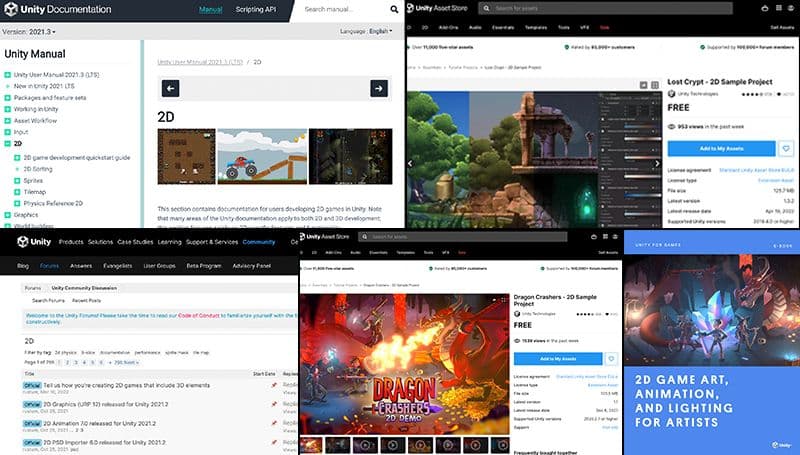
Help getting started
Access Unity’s massive user community, extensive body of frequently updated documentation, training for beginners, demos like Happy Harvest, Lost Crypt or Dragon Crashers, more advanced training like webinars, dedicated 2D forum, and other tips. Discover tools and resources to help you, at any skill level or for any project need.
Happy Harvest demo: Get the latest 2D techniques
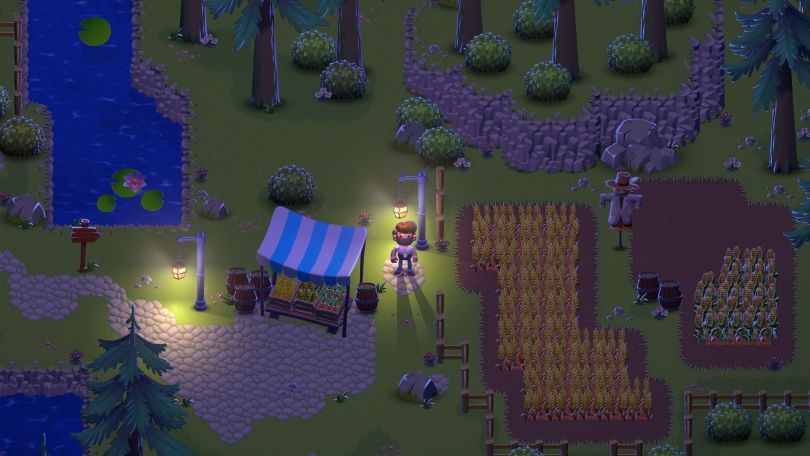
2D light and shadow techniques in URP
Learn how lights and shadows in the Happy Harvest demo are created using the Universal Render Pipeline (URP) in Unity 2022 LTS.
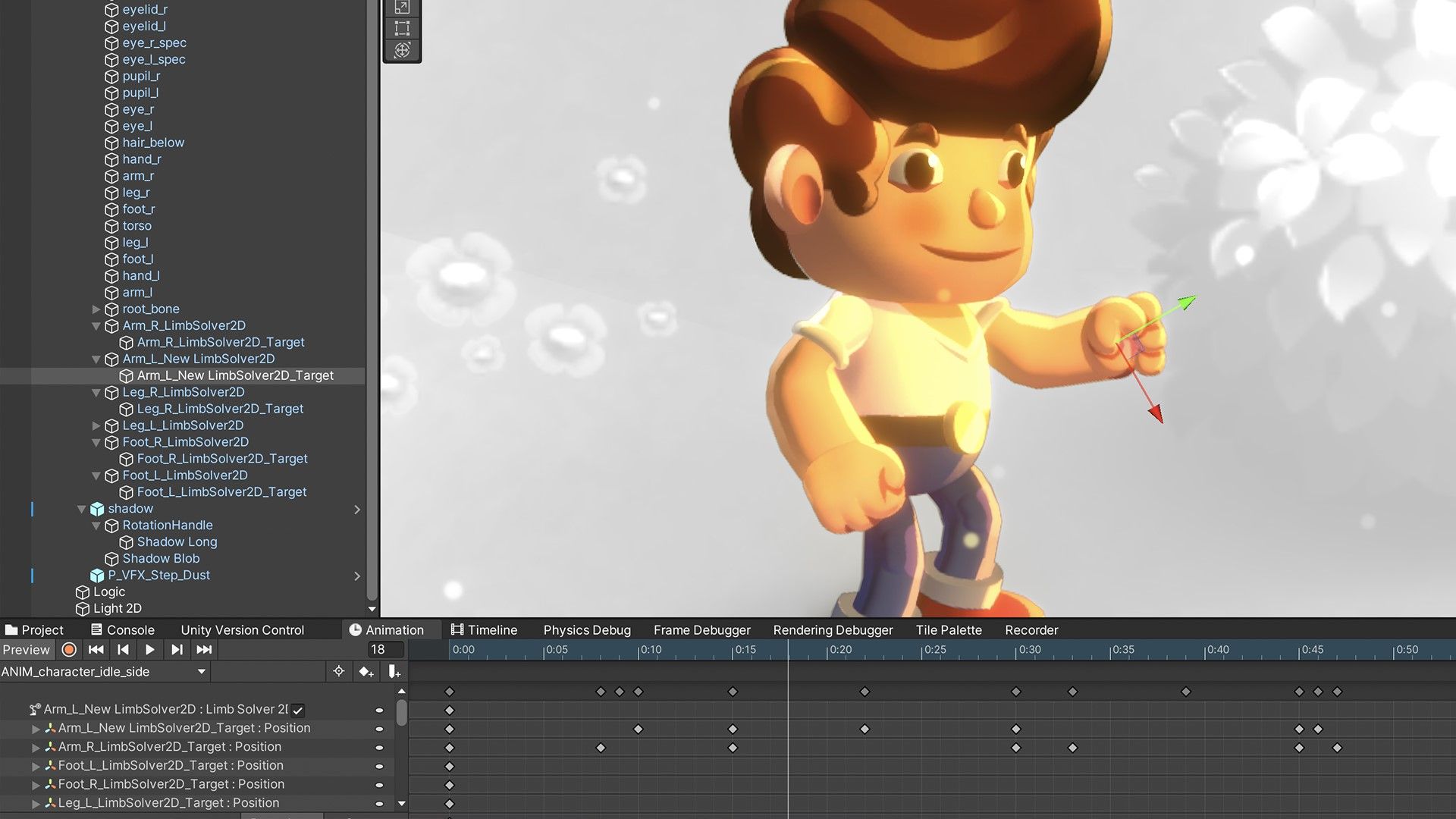
How to animate 2D characters in Unity 2022 LTS
Learn how the character in the Unity sample project, Happy Harvest, is animated. This article covers rigging, 2D skeletal animations, sprite swapping, and more.
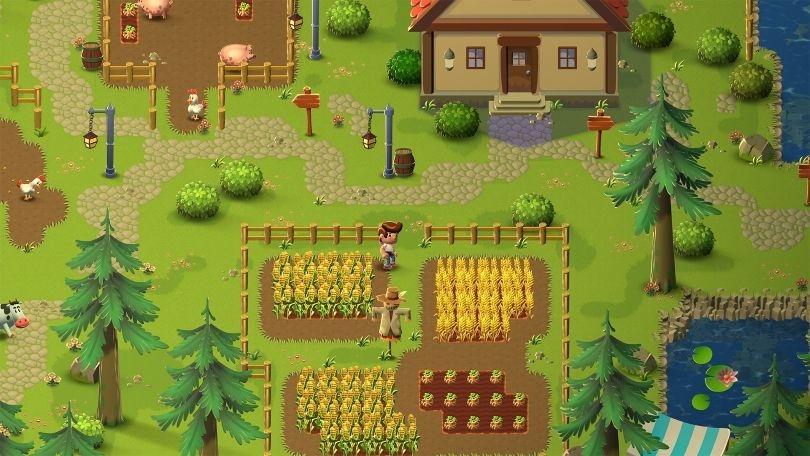
How to create art and gameplay with 2D tilemaps
Learn how the Unity Tilemap system is used to create the landscape in Happy Harvest, our top-down 2D farming simulation sample game.
Successful 2D game creators rely on Unity
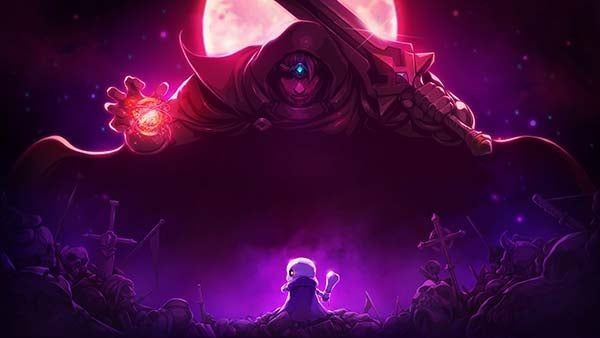
Skul: The Hero Slayer
Learn how Skul: The Hero Slayer’s acclaimed pixel art adventure took shape in Unity with tools like the Tilemap Editor, Pixel Perfect camera, Sprite Atlas, and more.
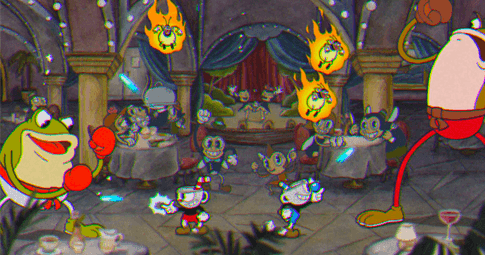
Cuphead
Discover how Unity helped enable the creative vision behind Cuphead’s iconic hand-drawn and inked visuals in this unique run-and-gun platformer.
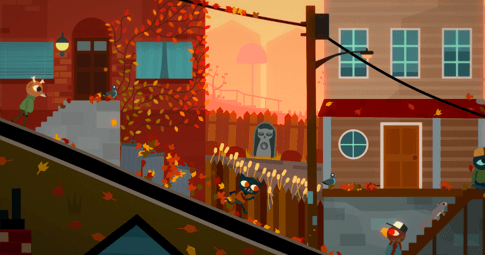
Night in the Woods
Discover how Unity’s 2D solutions helped power Night in the Woods’s expressive 2D art style and breathe life into a darkly humorous world of existential stories.
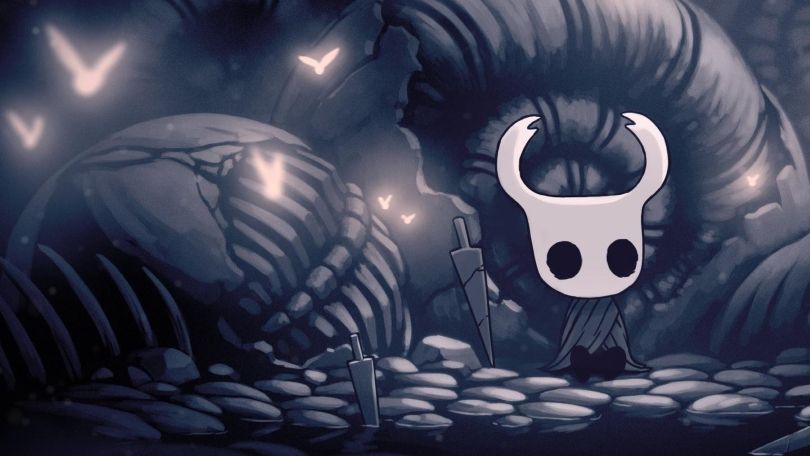
Hollow Knight
The game emphasizes skill and exploration across the vast, interconnected underground kingdom known as Hallownest.
Resources
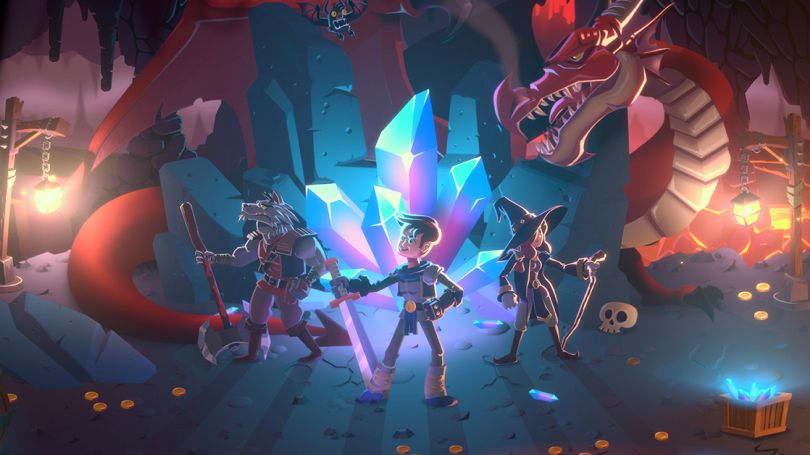
2D development
The 2D game art, animation, and lighting for artists e-book is our most comprehensive development guide yet, created for Unity creators who want to make a commercial 2D game.
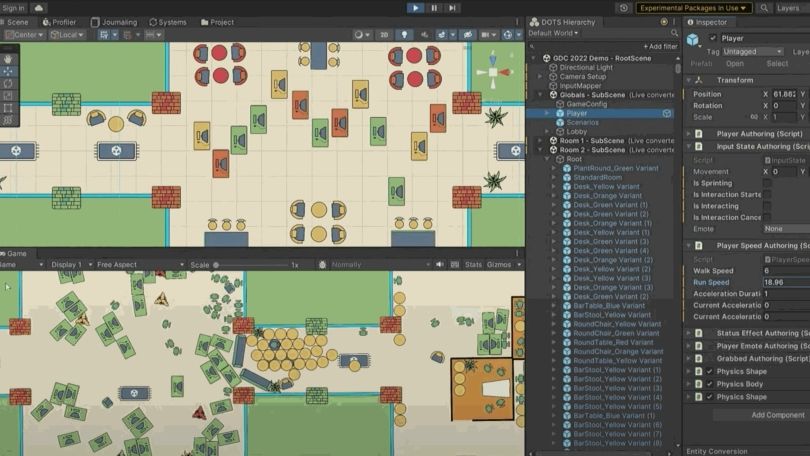
What’s new in the 2022 LTS
Check out the new features and improvements for artists and designers to optimize your creative workflows and build deeply immersive experiences.
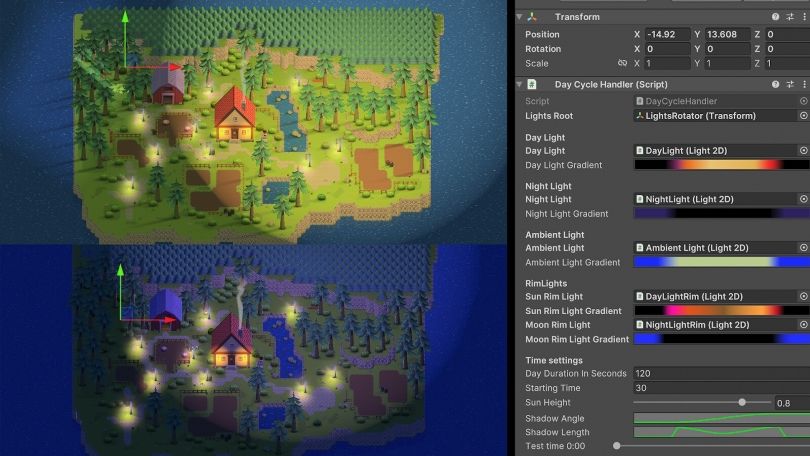
Check out 2D techniques used in Happy Harvest
Learn how to harness the latest capabilities for creating 2D lights, shadows, and special effects with the Universal Render Pipeline (URP) in Unity 2022 LTS.
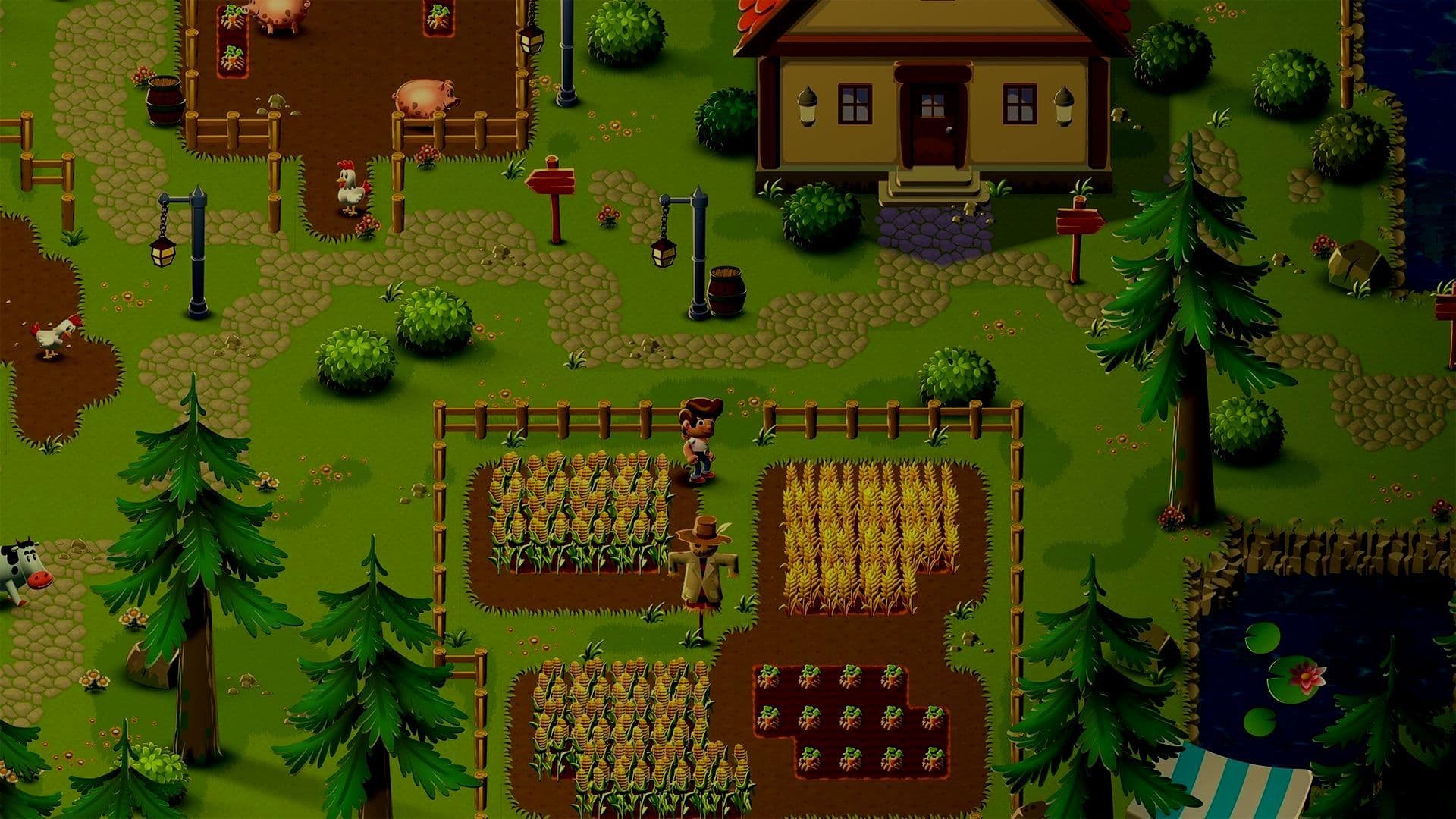
Explore best practices any 2D creator can use, including keeping sprites flat, moving shadow and volume information to secondary textures, advanced Tilemap features, and much more. Now available on the Unity Asset Store.